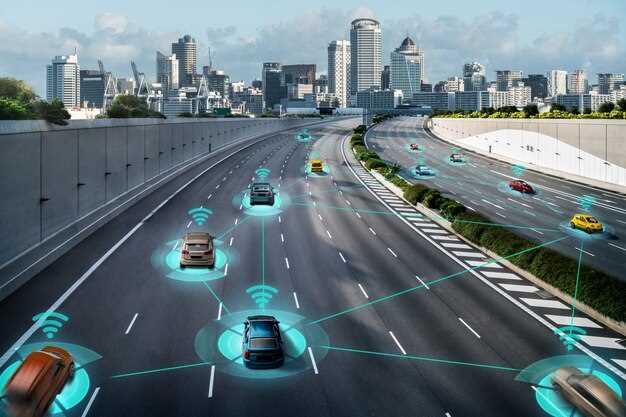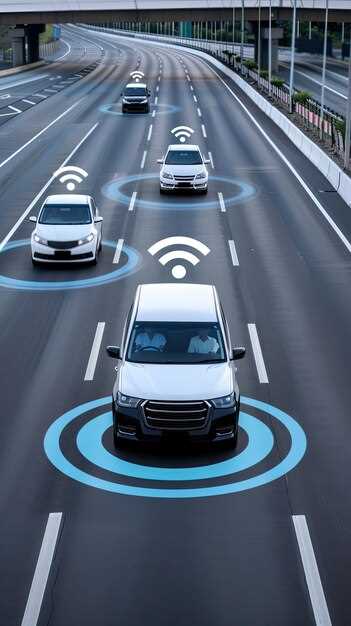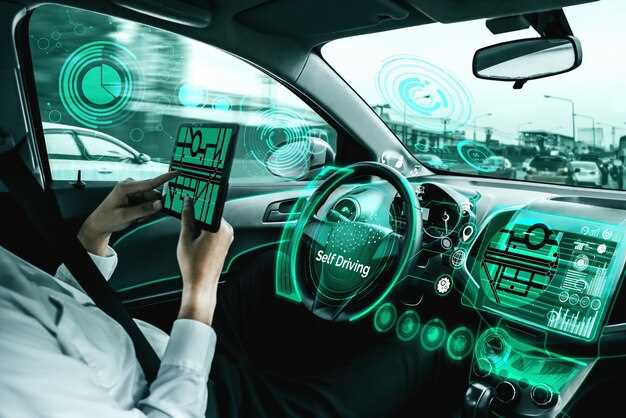
In recent years, the advent of autonomous driving technology has signified a pivotal shift in the landscape of transportation. The emergence of self-driving vehicles promises not only to redefine our understanding of mobility but also to enhance safety, efficiency, and accessibility in urban environments. Eliminating the necessity for a human driver, these advanced systems are designed to navigate complex road conditions, making travel more seamless than ever before.
The transition to autonomous vehicles has profound implications for both individuals and society at large. With the potential to vastly reduce human error, which is a leading cause of traffic accidents, autonomous driving technology aims to create a safer environment for all road users. Furthermore, these vehicles can optimize traffic flow and reduce congestion through advanced algorithms, promising a new era of efficient transport that rethinks traditional mobility practices.
Moreover, the proliferation of autonomous driving solutions introduces exciting possibilities for those previously unable to drive, including the elderly and people with disabilities. By providing greater independence and flexibility, autonomous vehicles can enhance the quality of life for numerous individuals, breaking down barriers and fostering inclusivity in transportation. As we delve deeper into the capabilities and implications of this transformative technology, it is essential to grasp how it is poised to change not just how we travel, but the very fabric of our communities.
Real-World Applications of Driver Assistance Systems

Driver assistance systems play a vital role in enhancing vehicle safety and improving the overall driving experience. These systems utilize a combination of sensors, cameras, and AI algorithms to provide support to drivers in various situations. One significant application is adaptive cruise control, which allows vehicles to maintain a safe distance from the car ahead by automatically adjusting speed, combining convenience and safety in long-distance travel.
Another critical application is lane-keeping assistance, which helps prevent unintentional lane departures. By using cameras to detect lane markings, vehicles can provide steering inputs to keep drivers centered within their lane, reducing the risk of accidents and enhancing road safety.
Parking assistance systems simplify the often-challenging task of parking. These systems can detect available parking spaces and provide guidance or even take complete control of the vehicle during parking maneuvers. This is particularly beneficial in urban environments where space is limited.
Collision avoidance systems are another vital advancement, utilizing advanced sensors to detect potential obstacles in real-time. If a collision is imminent, these systems can alert the driver and even apply emergency braking to prevent or mitigate accidents. This technology is increasingly being integrated into autonomous vehicles, further emphasizing the importance of safety in mobility.
Additionally, driver monitoring systems evaluate the driver’s attentiveness and can issue warnings if signs of drowsiness or distraction are detected. This feature is crucial in preventing accidents caused by human error and ensuring that drivers remain engaged during their journeys.
As autonomous vehicles evolve, the synergy between driver assistance systems and fully automated driving capabilities will be essential. These applications not only enhance the driving experience but also pave the way for a safer and more efficient transportation system in the future.
Safety Enhancements in Autonomous Vehicles
The advent of autonomous driving technology has revolutionized the landscape of mobility, particularly in the realm of safety. Unlike traditional vehicles operated by drivers, autonomous vehicles harness sophisticated algorithms and sensor systems to navigate roads, mitigating the risks associated with human error. This shift to automation ensures a more secure travel experience for occupants and pedestrians alike.
One of the primary safety enhancements in autonomous vehicles is the implementation of advanced driver assistance systems (ADAS). These systems utilize a combination of radar, cameras, and lidar to monitor the vehicle’s surroundings in real-time. Features such as automatic emergency braking, lane-keeping assistance, and adaptive cruise control significantly reduce the likelihood of collisions, providing an extra layer of protection for all road users.
Moreover, autonomous vehicles are designed to continuously improve their safety protocols through machine learning. As these vehicles collect data from various driving conditions, they adapt and refine their responses, enabling more accurate hazard detection and decision-making. This ability to learn from experience surpasses the fixed capabilities of human drivers, leading to enhanced overall safety.
An essential aspect of safety in autonomous vehicles is their redundancy in critical systems. Unlike traditional vehicles, these vehicles have multiple layers of backup systems for steering, braking, and throttle control, ensuring that even if one system fails, others can take over seamlessly. This redundancy increases the reliability of the vehicle and helps prevent accidents caused by technical malfunctions.
The integration of vehicle-to-everything (V2X) communication further elevates safety levels. Autonomous vehicles can communicate with other vehicles, infrastructure, and even pedestrians, sharing vital information about road conditions and potential hazards. This networked approach allows for proactive safety measures, reducing the chances of accidents through enhanced awareness of the driving environment.
In conclusion, the safety enhancements in autonomous vehicles represent a significant advancement in mobility. By leveraging technological innovations such as advanced driver assistance systems, machine learning, redundancy, and V2X communication, autonomous vehicles provide a safer alternative to traditional driving. As this technology continues to evolve, the potential for reducing accidents and saving lives becomes increasingly tangible.
Impact on Urban Mobility and Traffic Management

The integration of autonomous vehicles into urban environments is poised to revolutionize mobility and traffic management. As these vehicles become more prevalent, they bring a myriad of benefits that can enhance the efficiency, safety, and sustainability of urban transportation systems.
One significant impact of autonomous vehicles is their ability to reduce traffic congestion. By utilizing advanced algorithms and real-time data, these vehicles can optimize routes and communicate with each other to maintain efficient traffic flow. This leads to:
- Decreased travel times due to less stop-and-go traffic.
- Improved fuel efficiency as vehicles operate at optimal speeds.
- Lower emissions by reducing the number of vehicles idling in traffic.
Moreover, the autonomous driving technology can enhance safety on the roads. Vehicles equipped with sensors and machine learning capabilities are better at detecting obstacles and predicting potential hazards. This advancement results in:
- Fewer accidents caused by human error.
- Enhanced pedestrian safety as vehicles can better recognize and react to foot traffic.
- Decreased need for extensive traffic signage and signals, as vehicles can communicate directly with each other.
Additionally, autonomous vehicles can reshape urban infrastructure and public transport. With the presence of self-driving cars, traditional designs and road layouts may be re-evaluated, leading to:
- Reduction in parking space requirements as autonomous vehicles can drop passengers off and park themselves in less congested areas.
- Integration with public transport systems, allowing for seamless transfers between autonomous shuttles and conventional buses or trains.
- Opportunities for urban planners to reclaim space previously occupied by parking lots for green areas or pedestrian zones.
In terms of mobility access, autonomous vehicles offer potential solutions for underserved populations. Elderly individuals, people with disabilities, and those without access to private transportation can benefit greatly from on-demand autonomous services, enhancing their mobility and independence.
Overall, the impact of autonomous driving technology on urban mobility and traffic management is profound. By reducing congestion, enhancing safety, and reshaping infrastructure, these vehicles promise to create smarter, more efficient cities, ultimately improving the quality of urban life.





